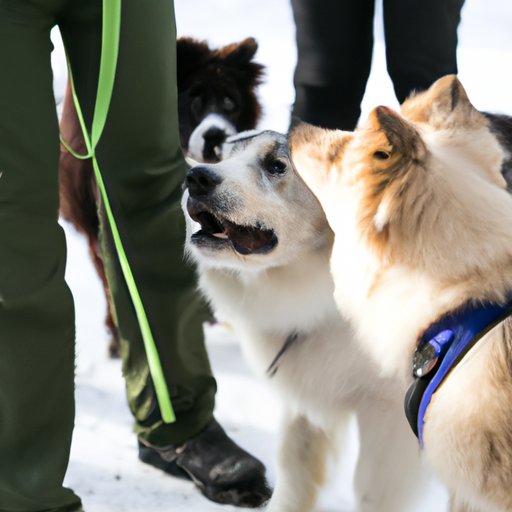
I. Introduction
Excessive barking is a common issue among dogs that can lead to disturbing neighbors, negative consequences, and an indication of an underlying issue. In this article, we will explore effective techniques and tips to solve the barking problem.
II. Determine the Cause
There are various reasons why dogs bark excessively, including boredom, anxiety, fear, territorial guarding, and lack of socialization. Identifying the cause is crucial in addressing the problem.
To determine the root of the issue, you can observe your dog’s behavior, keep a diary of barking instances, or seek professional help from a veterinarian or behaviorist.
III. Training Exercises
Training exercises are effective in modifying dog behavior and reducing excessive barking. Teaching the “quiet” or “enough” command is one of the most common techniques used. Here is a step-by-step guide:
- Wait for your dog to bark
- Say “quiet” in a firm but calm voice
- Wait for your dog to stop barking for a few seconds
- Reward your dog with treats or praise
Consistency, repetition, and positive reinforcement are crucial in this training exercise. Additionally, you can try other techniques such as distraction, counter-conditioning, and desensitization.
IV. Exercise
In some cases, excessive barking is a result of pent-up energy and boredom. Regular exercise and physical activity can help reduce barking episodes and improve your dog’s behavior. Some activities you can try include:
- Taking your dog for daily walks
- Playing fetch or hide and seek
- Introducing your dog to agility or obedience training
V. Consistency
Consistency is key in training and reducing excessive barking. Everyone in the household must use the same commands and techniques to avoid confusion and ensure effective training. Additionally, a consistent routine can help alleviate anxiety and stress.
To achieve consistency, establish a set of rules and commands for your dog and ensure that everyone in the household follows them. Consistent scheduling, feeding, and positive reinforcement are also vital factors in successful training.
VI. Desensitization
Desensitization is a gradual process that involves introducing your dog to stimuli that trigger barking. The aim is to desensitize your dog and gradually reduce the barking reaction. Here is a step-by-step process to start desensitization:
- Identify the stimuli that trigger your dog’s barking
- Expose your dog to the stimuli in a controlled and safe environment
- Stay calm and relaxed during the process
- Reward your dog with treats or praise for calm behavior
- Gradually increase the intensity and duration of the stimuli
VII. Seeking Professional Help
If the excessive barking problem persists despite your efforts, seek professional help from a veterinarian or dog trainer. A professional can provide a personalized training plan and help you identify an underlying medical condition. Additionally, there are various resources and tips available online or from your local animal shelter or rescue organization.
VIII. Conclusion
Excessive barking is a common issue among dogs that can lead to negative consequences and disturbance. However, it is a solvable problem with effective techniques and tips such as training exercises, exercise, consistency, desensitization, and seeking professional help. We hope this article has provided valuable insights and encouraged readers to successfully address excessive barking in their dogs.





